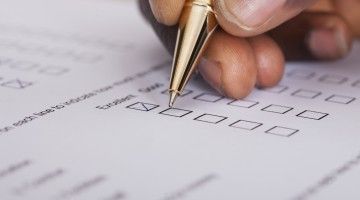Work precarity and vulnerability
“Precarious” is a word often used to describe work that is characterized by low pay, low job security and little protection. “Vulnerable” is a word often used in the health and safety world to describe those who are at an increased risk of work injury or disease. At the Institute for Work & Health (IWH), an evidence-based framework has been developed that defines OHS vulnerability as being exposed to hazards without having adequate protection. This page pulls together research on OHS vulnerability and work precarity.
Featured

Research Highlights
Death rates are higher for workers in precarious and lower quality jobs
Death rates are higher for workers in lower-quality jobs. That’s according to an IWH study that explored whether job quality was linked to rates of death.
Published: November 12, 2025

IWH in the media
Workers with disabilities report greater OHS vulnerability
According to a new study by the Institute for Work and Health (IWH), workers who identify as having a disability are more likely to be exposed to workplace hazards. Additionally, they are more likely to face inadequate occupational health and safety (OHS) protections. “Basically, they get hit with a double whammy,” said Dr. Curtis Breslin, lead author of the study.
Published: Canadian Occupational Safety, November 2017

At Work article
Workers with disabilities report greater hazard exposure and lower protection
Research elsewhere has shown that people with disabilities have a tough time getting hired. A new study at IWH now suggests we should also worry about those who do find jobs. Learn why.
Published: November 2017
Video
Video
Trouvez les travailleurs à protéger
La vulnérabilité en santé et en sécurité au travail ne dépend pas de qui vous êtes. Elle dépend des fonctions que vous accomplissez. Nos recherches montrent qu’il existe une meilleure façon de repérer les travailleurs vulnérables.
Published: August 2017
Video
Video
Find the workers you need to protect
How do you tell which workers are vulnerable to injury? Occupational health and safety (OHS) vulnerability is not about who people are. It's about the work they do. Use the OHS Vulnerability Measure to identify workers you need to protect.
Published: August 2017

Research Highlights
Workers with disabilities report greater OHS vulnerability
Workers with disabilities are more likely to be exposed to hazards at work than other workers, and are more likely to experience vulnerability due to inadequate measures to mitigate those hazards.
Published: July 2017
Journal article
Journal article
The relationship between occupational health and safety vulnerability and workplace injury
Published: Safety Science, April 2017

At Work article
OHS vulnerability as defined by IWH tool linked to self-reported injury rates
So you've answered 27 questions on the OHS Vulnerability Measure. What does your score say about your injury risk?
Published: February 2017

IWH in the media
Increased OHS vulnerability linked to higher rates of self-reported injury: study
Workers who report being vulnerable because they are exposed to job hazards from which they are not adequately protected by workplace policies, awareness programs or empowerment mechanisms also report much higher rates of work-related injury.
Published: Canadian Occupational Safety, January 2017

Impact case study
OHS leader Carillion Canada uses IWH’s vulnerability measure to identify areas for continuous improvement
Despite a strong OHS record, construction and facilities management company sees benefit of learning more through use of IWH's OHS Vulnerability Measure.
Published: December 2016

At Work article
Vulnerability survey helps employer assess worker OHS awareness, empowerment
Health and safety leader Carillion Canada uses IWH’s new measure to identify weaknesses in organization.
Published: November 2016
